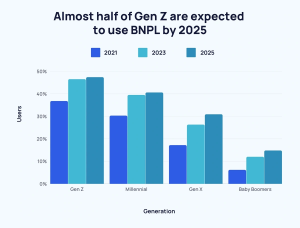In the last 5 years, everyone in marketing has set their sights on going viral and is moving full steam ahead. It seems like the best way to get your product or idea in front of the eyes of the masses and essentially get rich quick. We view viral marketing as basically free marketing and it has everyone in the industry clamoring after it. But what if we’ve all been chasing the wrong goal?
Professor at the University of Michigan’s Ross School of Business and SVP of Donor’s Social Engagement Marcus Collins studies behavioral science within the context of marketing, and he explains the science behind “going viral.” Across the world today we send out about 2.8 billion communicative nodes a day on social media alone. Our ideas, products, or marketing campaigns in the form of communicative nodes are said to have “gone viral” when they are passed from person to person over a short period of time, generally reaching millions.
“But People don’t necessarily move because things go viral. Viral information doesn’t necessarily provoke people to act” explains Collins. This means while your product video is seen by millions of people, you’re not necessarily making sales. Unless your sole purpose is spreading information or creating brand awareness, going viral won’t get you what you want.
In his work, Collins asks the question: how we can put things into the world that activate networks to move? The answer requires pivoting away from the golden goose egg of viral marketing and focusing our efforts on what he calls cultural contagion.
Cultural Contagion
Collins uses Hollywood films as an example of the difference. We all saw Avatar, it was the highest-grossing film in 2009. And even though he had seen it multiple times he found that he couldn’t remember the protagonist’s name. Can you? Probably not. A viral movie without action.
He then thought about the movie Frozen, which he had never seen before, yet he knew the main characters’ names and the words to the theme song. And he’s not alone. The Frozen soundtrack went number 1 on billboard with no radio play. In 2014, Let It Go was the most requested karaoke song, “Elsa” was the number 1 Halloween costume, and Elsa was a top baby name. The movie completely took over our pop culture. That is cultural contagion.
When we are marketing our product we want to create something that will spread from person to person but will also take hold and become an adopted behavior on a large scale. In order to achieve this, we need to rethink our views on culture.
To many of us, culture means celebrities, media, movies, and music. While these are vehicles for culture, the actual meat of it is found in our shared beliefs; artifacts like tools, clothing, and symbols; social norms or acceptable behaviors; and everything about our language from lexicon and dialect to songs and poetry. To move people to action you and your marketing need to have great intimacy with the culture you are trying to speak to. Collins claims people want to use brands as a shortcut to expressing their culture—they wear them like badges of identity to tell people who they are and what they’re about.
To reach cultural contagion, your marketing needs to move away from the shock and awe of viral marketing and move towards a true testament to the culture it is born from.
Digital & Social Articles on Business 2 Community(46)







